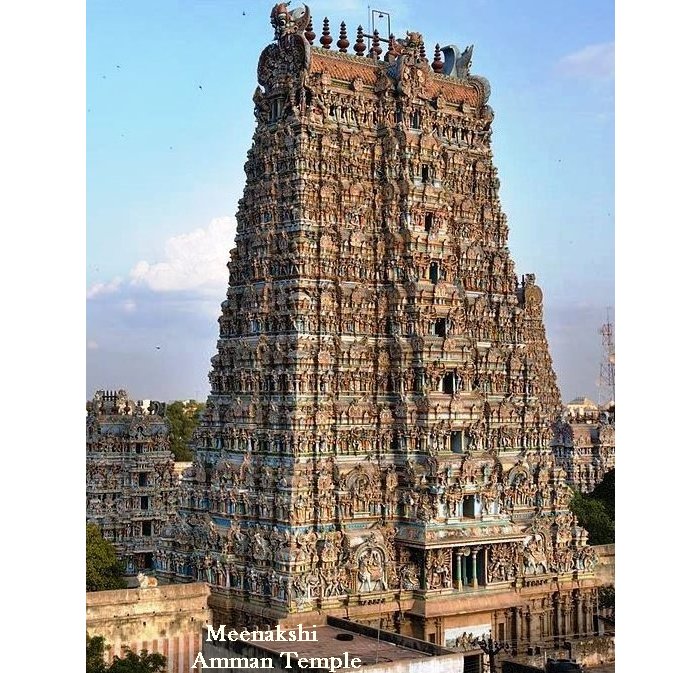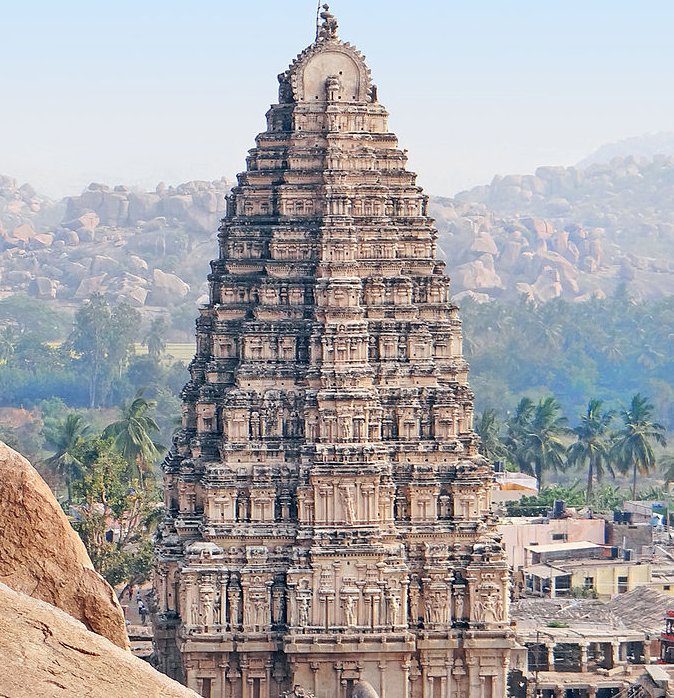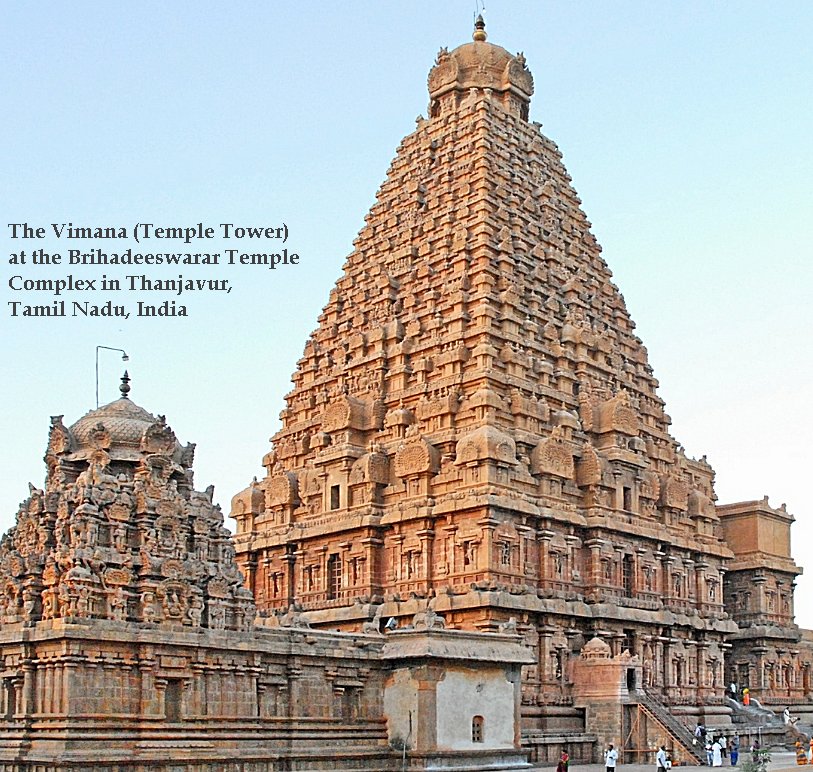Vimana Temples – Architectural Marvel Of India
A. Sutherland - AncientPages.com - Evidence of the engineering marvel of Indian architecture can be clearly seen in the country's temples.
However, it is not only about the work of ancient engineers of India. It is worth mentioning that Hindu cosmology shapes the temples’ form because "it recreates the universe and every person’s struggle, occurring over multiple lifetimes, to cast aside illusion in order to realize divine truth and oneness with an infinite god." 1
This temple is dedicated to the goddess Meenakshi who is the incarnation of the Hindu goddess Parvati.
Temples were built to house a sacred symbol of a particular god.
This structure is the mountain residence of the gods because according to Hindu cosmology, the gods have always been associated with mountains.
The temple’s overall form, dominated by its large central tower (vimana), reconstructs the appearance of god’s mountaintop dwelling.
All of these temples have beautiful, precise, and harmonious geometry and many of them are richly decorated with sculptures of gods, animals, flowers, erotic scenes, geometric patterns, and other figures bringing the memory of mythological episodes.
Virupaksha, a 7th century Hindu temple, is located in Hampi 350 km from Bangalore, in the state of Karnataka in southern India. source
Several temples of India have impressive, soaring towers ‘Gopuram' (or ‘Gopura’), usually ornate, at the entrance of any temple, especially in Southern India. Gopurams are the dominant architectural feature of a temple's outer appearance, sometimes soaring as high as 170 feet and completely overshadowing the main shrine and other structures of the temple, due to their colossal size.
The Early Cholas always built the vimana (tower) of the core temple sanctuary as the highest structure in the temple complex. Later, the Medieval Cholas began to build the gopurams even taller than the central sanctuary’s vimana towers.
This building style was continued and widely used by later Hindu dynasties.
In the Dravidian (or South Indian style), “the sanctuary and the superstructure together are called the vimana,” writes Thapar Bindia in his ‘Introduction to Indian Architecture". In architecture texts regarding this style, the vimana is described as a mountain-like spire of a free-standing temple.
“The most distinctive feature of the Dravidian style is the articulation of the vimana, a composite of the garbha griha and superstructure or spire (shikhara) which is a trapezoidal structure, starting on a square base, and soaring up in a series of well-articulated stories called tala…”
(‘Shikhara’ means a dome-shaped crowning cap is located above the Vimana, while a Vimana resembles a stepped pyramid that rises up geometrically.
The towers symbolize power and connection between the human world on earth and the abode of gods and goddesses in the high heavens.
Written by – A. Sutherland - AncientPages.com Senior Staff Writer
Copyright © AncientPages.com All rights reserved. This material may not be published, broadcast, rewritten or redistributed in whole or part without the express written permission of AncientPages.com
Expand for referencesReferences:
- India Revealed: Hindu Temples of South India
Thapar, Bindia. Introduction to Indian Architecture
Approach Guides. India Revealed: Hindu Temples of South India
Suriya, Jothirlingam: The Indian Temple Guide
More From Ancient Pages
-
 Pharaonic Water Wells Discovered For The First Time Near ‘Horus Road’ In Sinai, Egypt
Archaeology | Mar 1, 2022
Pharaonic Water Wells Discovered For The First Time Near ‘Horus Road’ In Sinai, Egypt
Archaeology | Mar 1, 2022 -
 England’s Oldest Bible Reveals Surprising Hidden Secrets
Biblical Mysteries | Mar 19, 2016
England’s Oldest Bible Reveals Surprising Hidden Secrets
Biblical Mysteries | Mar 19, 2016 -
 Artificial Intelligence Recreates Pompeii’s Ruined Ancient Masterpieces
Archaeology | Jul 8, 2023
Artificial Intelligence Recreates Pompeii’s Ruined Ancient Masterpieces
Archaeology | Jul 8, 2023 -
 Mystery Of The Bizarre Dark Figure Vanishing Into Thin Air Seen By Hotel Guests And Staff
Featured Stories | Mar 15, 2019
Mystery Of The Bizarre Dark Figure Vanishing Into Thin Air Seen By Hotel Guests And Staff
Featured Stories | Mar 15, 2019 -
 Fossil Of Prehistoric Saber-Toothed Cat Found In Texas
Fossils | Jun 11, 2024
Fossil Of Prehistoric Saber-Toothed Cat Found In Texas
Fossils | Jun 11, 2024 -
 Rare Collection Of Roman Coins Unearthed In Ancient City Of Aizanoi, Turkey
News | Feb 4, 2021
Rare Collection Of Roman Coins Unearthed In Ancient City Of Aizanoi, Turkey
News | Feb 4, 2021 -
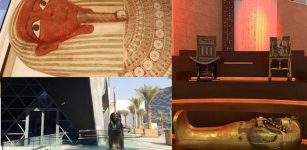 Ancient Coffin Of Priest Psamtik, Son Of Osiris And Five Replicas Of Goddess Maat Sent On Upcoming Expo
Archaeology | Oct 5, 2021
Ancient Coffin Of Priest Psamtik, Son Of Osiris And Five Replicas Of Goddess Maat Sent On Upcoming Expo
Archaeology | Oct 5, 2021 -
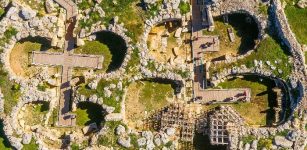 Ggantija Double Temple On Malta Is Older Than Stonehenge And Great Pyramid Of Giza
Civilizations | Jan 16, 2023
Ggantija Double Temple On Malta Is Older Than Stonehenge And Great Pyramid Of Giza
Civilizations | Jan 16, 2023 -
 Cerne Abbas Giant: Researchers Attempt To Determine Age Of Giant Figure
Archaeology | Mar 27, 2020
Cerne Abbas Giant: Researchers Attempt To Determine Age Of Giant Figure
Archaeology | Mar 27, 2020 -
 Stone Toilet Of A First Temple Period Luxury Villa Reveals The Jerusalem Elite Suffered From Infectious Disease
Archaeology | Jan 4, 2022
Stone Toilet Of A First Temple Period Luxury Villa Reveals The Jerusalem Elite Suffered From Infectious Disease
Archaeology | Jan 4, 2022 -
 Gravitational Waves Shed Light On The Mysterious Antikythera Mechanism
News | Jun 29, 2024
Gravitational Waves Shed Light On The Mysterious Antikythera Mechanism
News | Jun 29, 2024 -
 World’s Oldest Shoes: Some Look Surprisingly Modern
Artifacts | Jun 22, 2023
World’s Oldest Shoes: Some Look Surprisingly Modern
Artifacts | Jun 22, 2023 -
 Unusual Relic That Mysteriously Disappeared From The Vatican
Ancient Mysteries | Nov 8, 2018
Unusual Relic That Mysteriously Disappeared From The Vatican
Ancient Mysteries | Nov 8, 2018 -
 Accelerated Bone Deterioration At Mesolithic Peat Bog In Ageröd, Sweden
Archaeology | Aug 4, 2020
Accelerated Bone Deterioration At Mesolithic Peat Bog In Ageröd, Sweden
Archaeology | Aug 4, 2020 -
 Controversial Ancient Takenouchi Documents Could-Re-Write Our History – Story Of Gods, Lost Continents And Ancient Sages
Featured Stories | Apr 28, 2017
Controversial Ancient Takenouchi Documents Could-Re-Write Our History – Story Of Gods, Lost Continents And Ancient Sages
Featured Stories | Apr 28, 2017 -
 Something Unexplained Is Happening In Ancient English Caves – Reports From Numerous People
Featured Stories | Oct 22, 2024
Something Unexplained Is Happening In Ancient English Caves – Reports From Numerous People
Featured Stories | Oct 22, 2024 -
 Extremely Rare Jurassic Fossils Discovered Near Lake Powell, Utah
Fossils | Oct 16, 2023
Extremely Rare Jurassic Fossils Discovered Near Lake Powell, Utah
Fossils | Oct 16, 2023 -
 Ancient Papyrus Reveals Millennia Old Astronomical Secret: The ‘Demon Star’ Algol Does Exist
Civilizations | Aug 23, 2015
Ancient Papyrus Reveals Millennia Old Astronomical Secret: The ‘Demon Star’ Algol Does Exist
Civilizations | Aug 23, 2015 -
 Ptolemaic Period’s Mummies With Nails And Tongues Of Gold Among Unique Remains Unearthed At Ancient City Of Oxyrhynchus, Egypt
Archaeology | Dec 19, 2024
Ptolemaic Period’s Mummies With Nails And Tongues Of Gold Among Unique Remains Unearthed At Ancient City Of Oxyrhynchus, Egypt
Archaeology | Dec 19, 2024 -
 Will Lidar Survey Help To Unravel Mystery Of Ancient Staircase In Cambodia?
Archaeology | Mar 5, 2017
Will Lidar Survey Help To Unravel Mystery Of Ancient Staircase In Cambodia?
Archaeology | Mar 5, 2017

